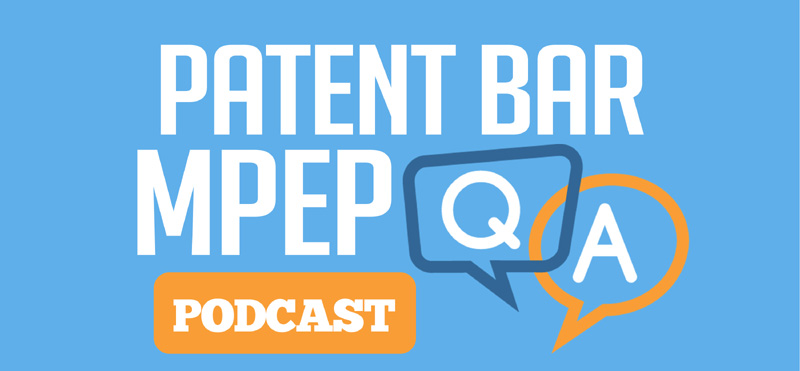
Podcast: Play in new window | Download
Subscribe: Apple Podcasts | RSS
Question:
List one way possession may be shown.
Answer:
Possession may be shown in many ways.
- For example, possession may be shown by describing an actual reduction to practice of the claimed invention.
- Possession may also be shown by a clear depiction of the invention in detailed drawings or in structural chemical formulas which permit a person skilled in the art to clearly recognize that applicant had possession of the claimed invention.
- An adequate written description of the invention may be shown by any description of sufficient, relevant, identifying characteristics so long as a person skilled in the art would recognize that the inventor had possession of the claimed invention.
Chapter Details:
The answer to this question can be found in chapter 2100 of the MPEP. This chapter covers Patentability.
The answer is from the 9th Edition, Revision 07.2015. Depending on future changes to the MPEP, the question and answer may or may not be applicable in later Editions or revisions.
Section Summary:
This question and answer comes from section 2163 of the MPEP. The following is a brief summary of section 2163.
2163 Guidelines for the Examination of Patent Applications Under the 35 U.S.C. 112(a) or Pre-AIA 35 U.S.C. 112, para. 1, “Written Description” Requirement
This section covers the written description requirement of the first paragraph or paragraph (a) of 35 U.S.C. 112. The essential goal of the written description requirement is to clearly convey that the applicant has invented the subject matter which is claimed.
This section covers further details of the written description as well as signs of an inadequate written description along with amendments. For instance, the written description requires that for an essential feature in the original claims, the feature must also be described in the specification or claims, and must not be conventional in the art or known to one of ordinary skill in art. A broad generic disclosure is not necessarily a sufficient written description of a specific embodiment, especially where the broad generic disclosure conflicts with the remainder of the disclosure.
